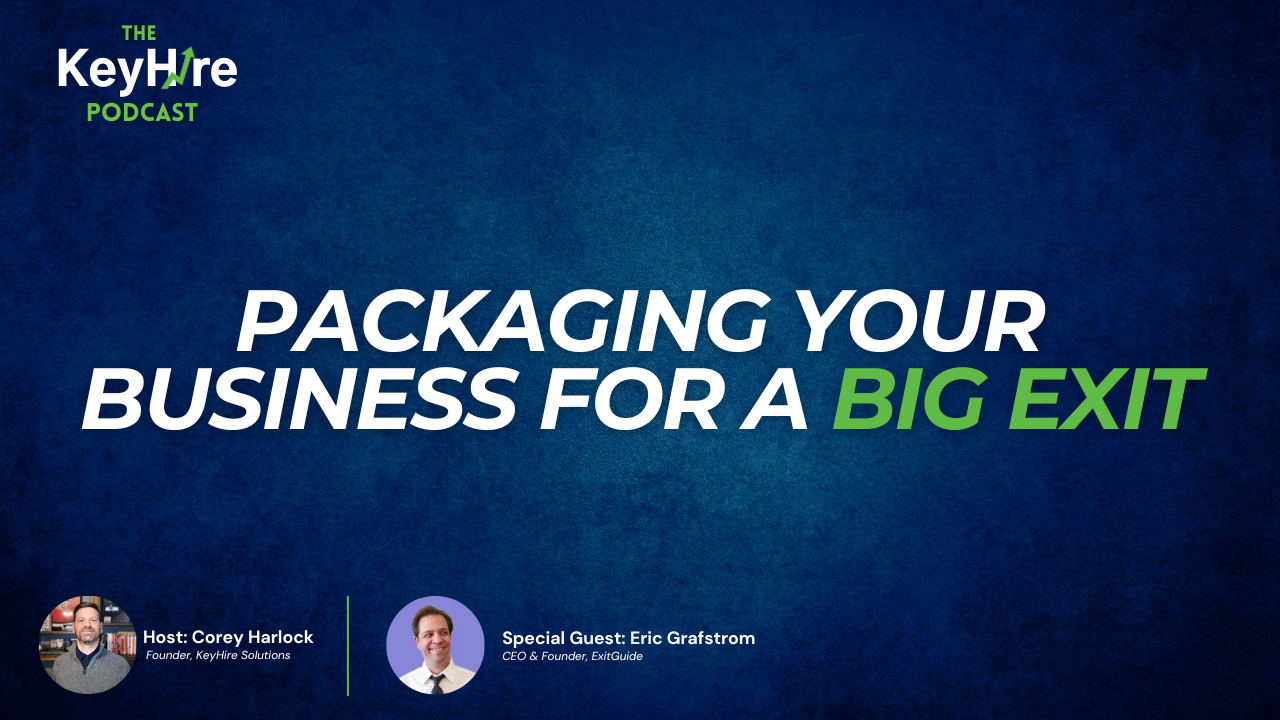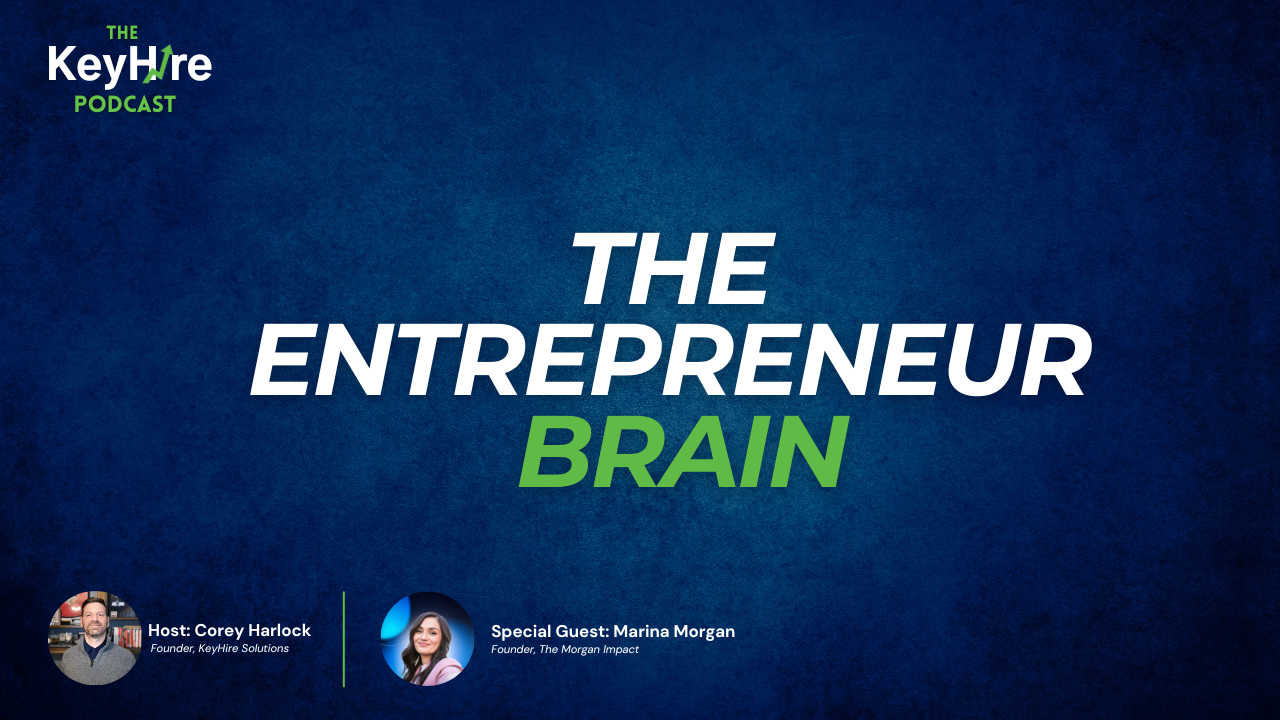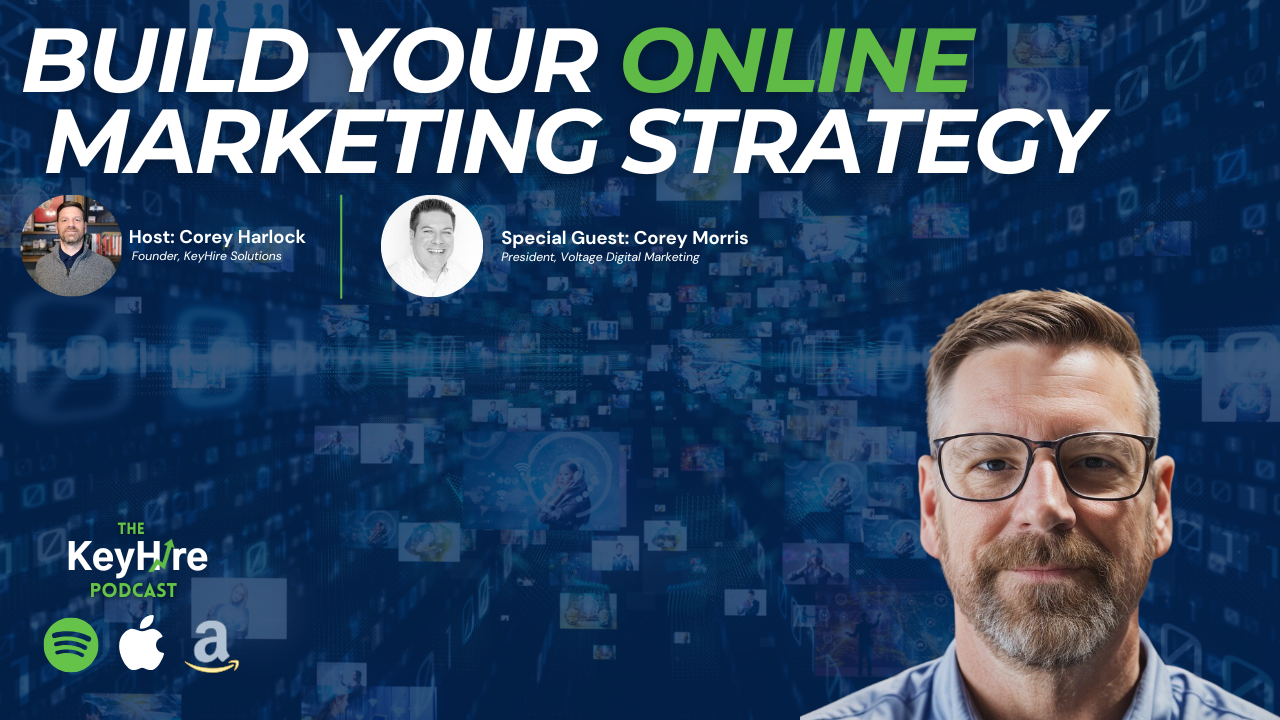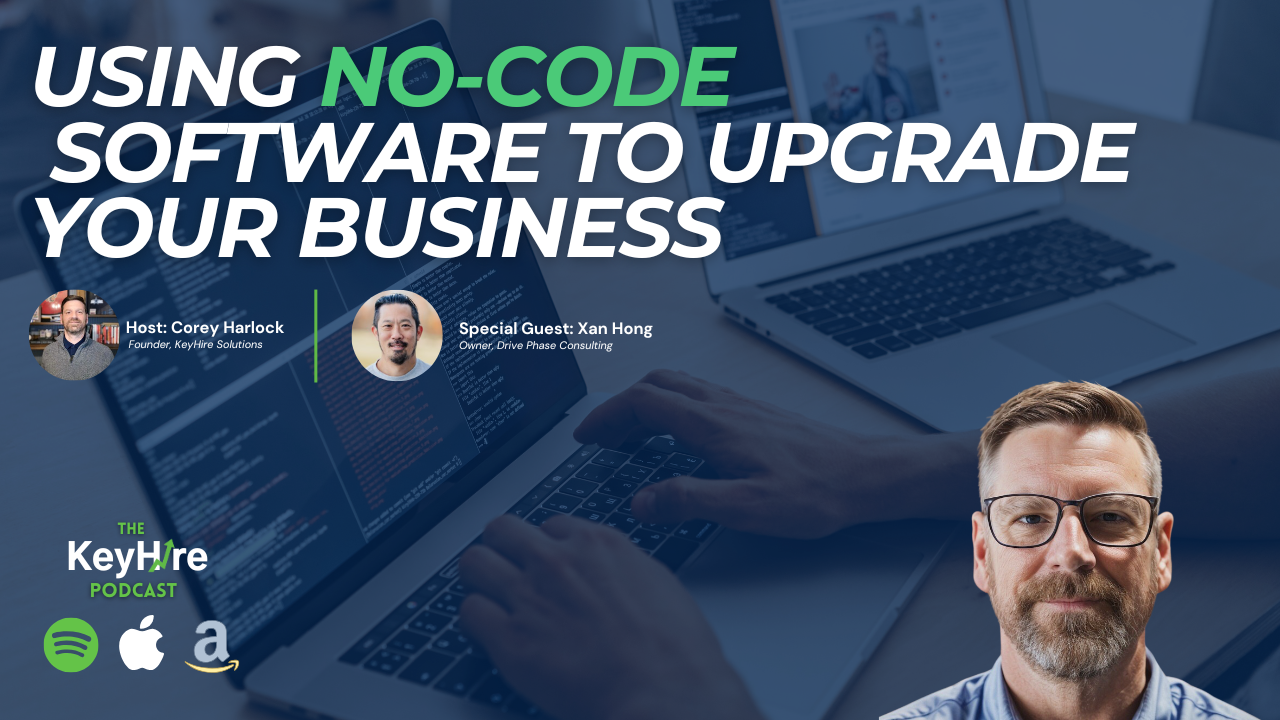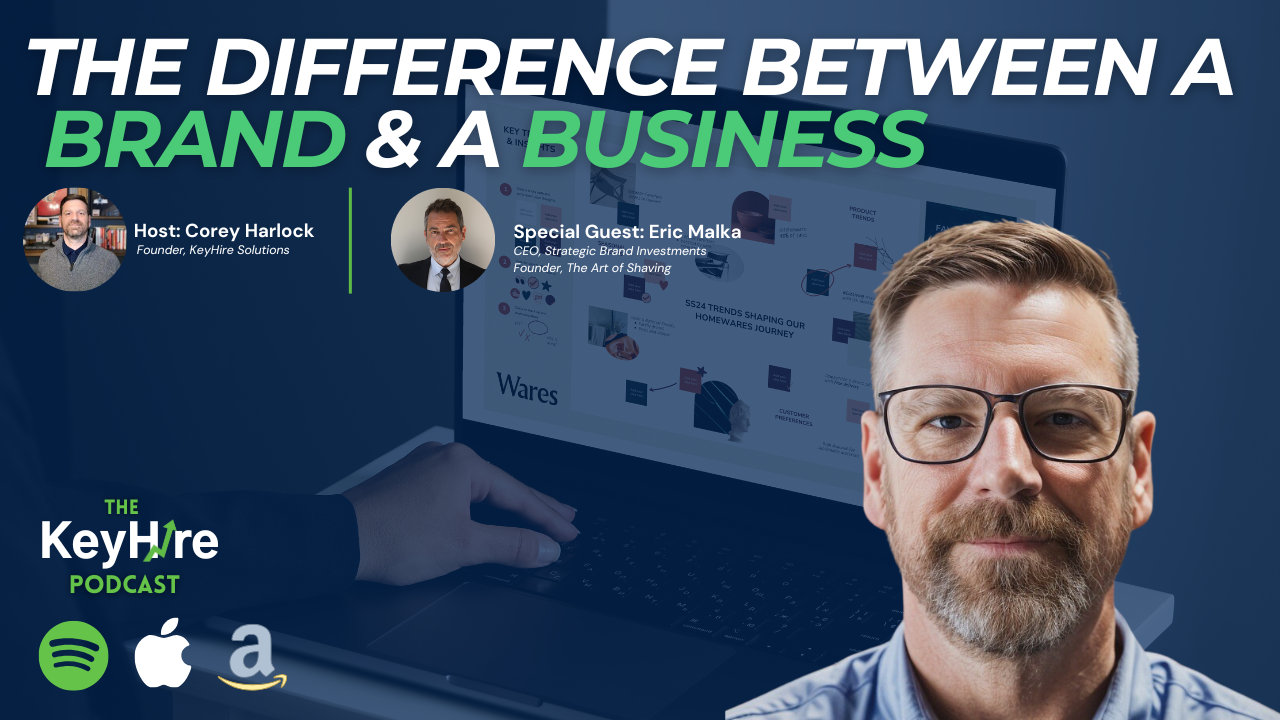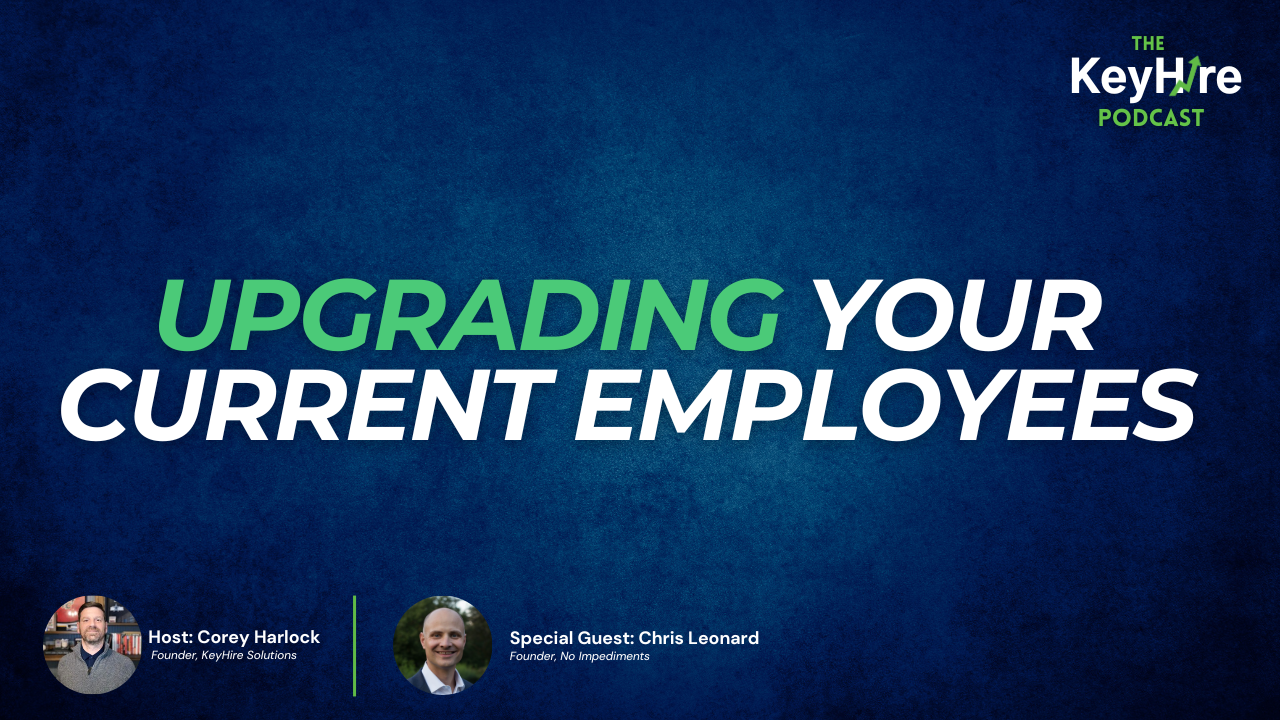The Boomerang Effect: Smart Hiring Strategies for Business Growth

In today's evolving talent landscape, forward-thinking small business owners are discovering a powerful recruiting advantage: former employees who want to return. Known as "boomerang employees," these returning team members represent an innovative talent acquisition strategy that successful entrepreneurs are using to accelerate business growth and build stronger teams.
Corey Harlock, founder of KeyHire Solutions, recently explored this phenomenon in his latest podcast episode, The Boomerang Effect: Rehiring Right or Getting It Wrong? His insights reveal why this approach could be a game-changer for your small business management strategy.
Understanding the Boomerang Employee Strategy
A boomerang employee is someone who previously worked for your company, left for other opportunities, and now wants to return. The psychology behind it runs deeper than most business owners realize.
"It's a rehire. It's hiring someone who used to work for you," Harlock explains. "The concept around the boomerang employee is they leave for greener pastures, they find out it's not so green on the other side, and they realize maybe I didn't have it so bad where I used to be."
For small businesses generating $5-25 million in revenue, this trend represents more than just a hiring opportunity—it's a strategic advantage that can accelerate growth while reducing recruitment costs and onboarding time. When valuable employees resign, emotions often override business judgment. The timing is usually terrible, and the personal sting of rejection can cloud decision-making.
"When a valuable employee quits, they usually quit at the exact wrong time when you feel like you need them most," Harlock notes. "As a business owner, it can be hard not to take it personally and not be upset about it."
Many business owners either walk departing employees out immediately or allow the relationship to sour during the notice period. This emotional reaction can permanently damage relationships with talented individuals who might otherwise return as even more valuable contributors.
Why Small Business Hiring Strategies Should Embrace Boomerang Talent
Key Advantages of Boomerang Employees:
- Enhanced Skill Sets: Former employees who return often bring significantly expanded capabilities from their experiences at other organizations
- Cultural Fit: They already understand your company culture, values, and core business model, eliminating many onboarding challenges
- Accelerated Integration: Boomerang employees know internal dynamics and can quickly reconnect with existing team members
- Reduced Risk: Unlike external hires, you know their work ethic, personality, and performance history
- Cost Efficiency: Shorter training periods and compressed learning curves create compelling financial advantages
Consider this scenario: An employee left your $8 million company to join a $50 million organization, where they progressed from individual contributor to management. When they return, they're bringing that expanded capacity back to your business.
While you'll likely pay boomerang employees more than their previous salary, the return on investment often exceeds that of new hires. When a high performer leaves, your odds of finding an equally capable replacement are only one in three. Boomerang employees eliminate many of these risks while providing known outcomes.
Building Relationships That Support Business Growth
The success of any boomerang strategy hinges on how you handle employee departures. This requires a fundamental shift in perspective—from viewing resignations as betrayals to seeing them as temporary career detours.
The Professional Departure Process
- Take a Strategic Pause: Before reacting emotionally, ask yourself: "If they ever wanted to come back, would I bring them back?"
- Express Genuine Understanding: Acknowledge their decision to leave, even if the timing is inconvenient
- Recognize Their Contributions: Highlight their positive impact on your organization
- Maintain Professional Grace: Be honest about your disappointment while remaining supportive
- Keep Doors Open: Periodic check-ins after they've settled show genuine interest in their success
"Take a beat, take a breath, and think, if they ever wanted to come back, would I bring them back?" Harlock advises. "If the answer is yes, we need to treat them with respect and treat them as well on their last day as we did on their best day."
This approach involves checking in periodically, after they've had time to settle. A simple email asking how things are going keeps doors open while demonstrating your commitment to professional relationships beyond employment.
Evaluating Boomerang Candidates: A Strategic Framework
Not every former employee should be welcomed back. Smart business owners evaluate potential boomerang hires against specific criteria to ensure strategic alignment and business value.
Experience Assessment: Have they gained transferable skills and knowledge that benefit your current objectives? Look for growth in technical capabilities, leadership experience, or industry expertise that wasn't available when they first worked for you.
Cultural Evolution: Are their professional changes compatible with your current company direction? People grow and change—ensure their new perspectives align with where your business is heading, not just where it was.
Business Need Validation: Do you have legitimate operational requirements that they can address? The role should align with genuine business needs and growth objectives, not just personal relationships or nostalgia for past performance.
Financial Feasibility: Are their salary requirements within your budget parameters? Former employees typically expect compensation that reflects their market growth and expanded responsibilities.
Critical Mistakes That Damage Boomerang Opportunities:
- Emotional Decision-Making: Letting frustration about timing or feeling personally rejected drive your response to resignations
- Compensation Assumptions: Expecting returning employees to accept the same pay and responsibilities they had before leaving
- Integration Oversights: Assuming they can immediately operate at full capacity without proper reintegration support
- Manufactured Positions: Creating roles just to accommodate a boomerang employee's return without a genuine business need
The most significant mistake is allowing emotions to drive decisions during the departure process. When frustrated about timing or feeling personally rejected, it's easy to dismiss the employee's contributions or make their final weeks uncomfortable. This reaction closes doors that should remain open for future opportunities.
Another common error involves expectations around compensation and growth. Former employees have gained experience and market exposure—they'll negotiate for roles and salaries that reflect their development. Failing to recognize this evolution can lead to failed negotiations and missed opportunities.
Don't overlook the importance of setting clear expectations for returning employees. Your company culture, processes, team dynamics, and business priorities may have evolved significantly during their absence.
Implementation Strategy: Your Next Steps
Ready to implement a boomerang strategy in your organization? Here's your systematic approach to getting started:
Immediate Actions:
- Audit Current Departure Processes: Review how you currently handle employee resignations and identify improvement opportunities
- Establish Exit Interview Protocols: Go beyond surface-level feedback to understand real departure reasons
- Create Relationship Maintenance Systems: Develop simple processes for staying connected with former employees
- Train Management Teams: Ensure leaders understand the strategic value of professional departures
Long-Term Development:
Begin with your next employee resignation. Instead of reacting emotionally, pause and ask: "Would I want this person back if circumstances were different?" If yes, focus on creating a positive departure experience that keeps future doors open.
Develop systematic approaches to exit interviews that reveal actionable insights. Understanding genuine reasons behind departures helps you address systemic issues that might be driving talent away unnecessarily.
Create simple systems for maintaining relationships with former employees. This doesn't require extensive effort—periodic check-ins via LinkedIn, holiday greetings, or sharing company milestone announcements can keep connections alive without being intrusive.
Most importantly, evaluate your overall talent acquisition strategies to ensure you're maximizing your chances of finding and retaining top performers from the start. If you're consistently losing good employees, addressing root causes is more effective than simply hoping they'll return later.
For small business owners who want to develop more sophisticated talent acquisition approaches, consider partnering with specialists who understand the unique challenges of scaling organizations. KeyHire Solutions works exclusively with small businesses to create custom hiring strategies that support sustainable growth.
Key Takeaways
The boomerang employee phenomenon offers small businesses a strategic advantage in today's competitive talent market. By maintaining professional relationships with departing employees and creating pathways for their return, you build a talent pipeline that can accelerate business growth while reducing hiring risks and costs.
Successful boomerang strategies start with emotional intelligence during employee departures. Treat resignations as temporary career detours rather than personal betrayals and focus on preserving relationships that could benefit both parties in the future. Former employees who return often bring enhanced skills and faster integration times, making them valuable additions to growing teams.
The key to effective small business management in this area lies in long-term thinking and strategic relationship building. When valued employees resign, resist the urge to react emotionally and instead consider the strategic value of maintaining positive professional connections.
The boomerang approach is becoming a refined strategy that established organizations can use to enhance the strengths and capabilities within their teams. In today's competitive talent market, your former employees might just be your future secret weapon for sustainable business growth.
Want to listen to the full conversation? Listen to this episode of The Key Hire Small Business Podcast featuring Corey Harlock.
Check out our sponsor:
Career Spring, Careers launch here: https://careerspring.org/
Connect With Us:
KeyHire Solutions, Be Our Next Success Story: https://www.keyhire.solutions/testimonials
Contact Corey: corey@keyhire.solutions
